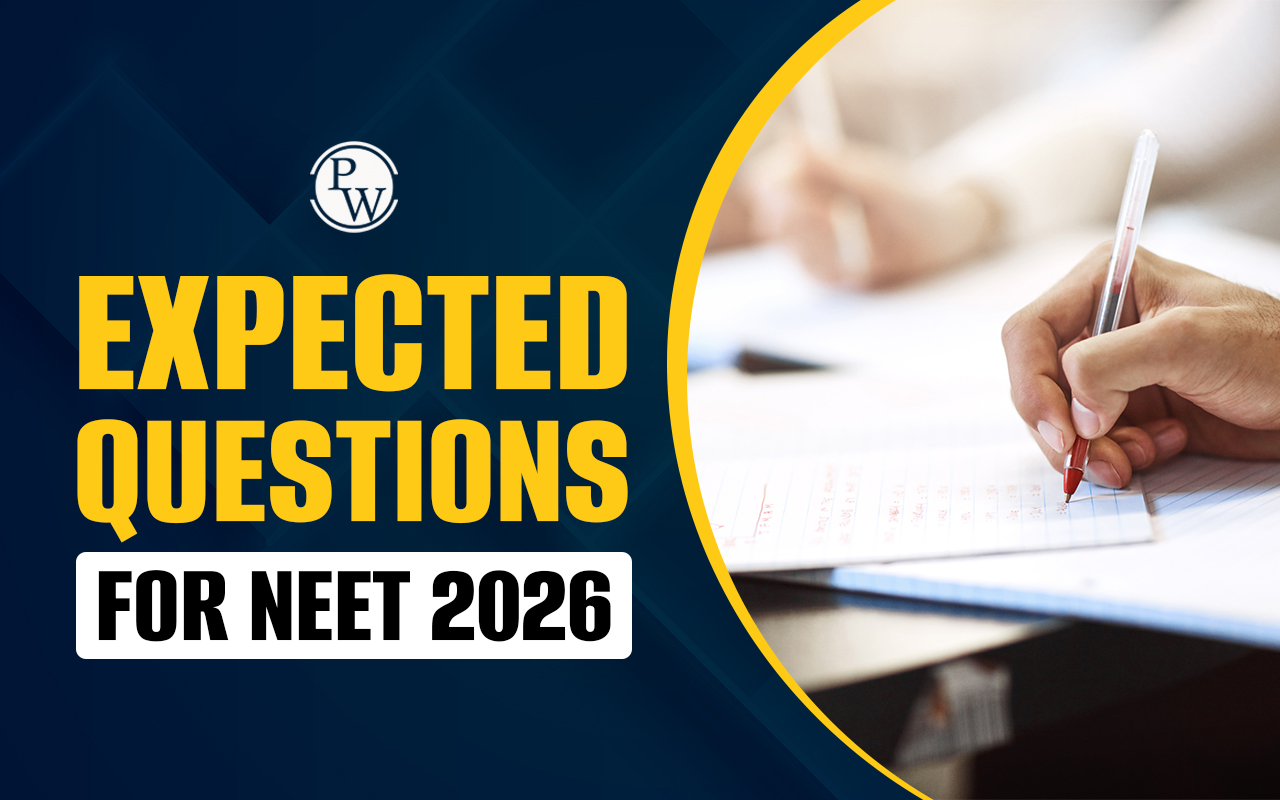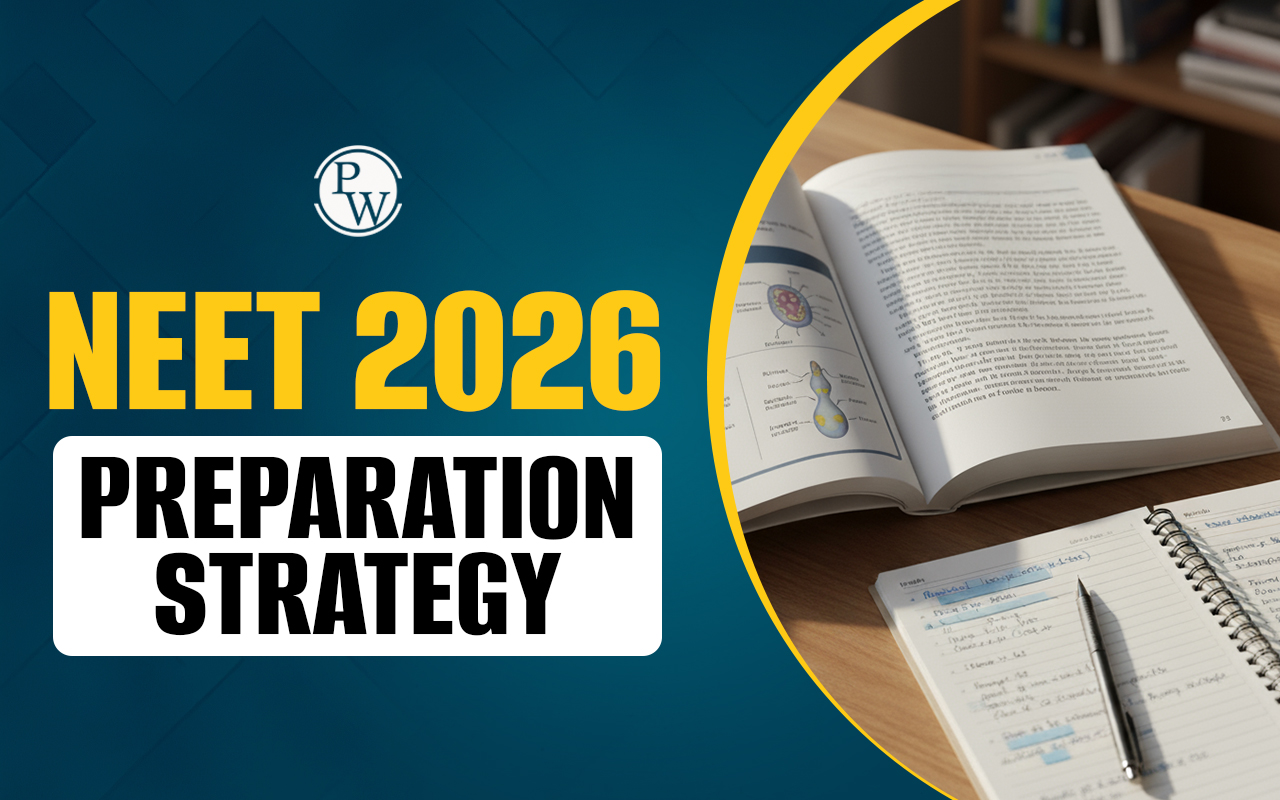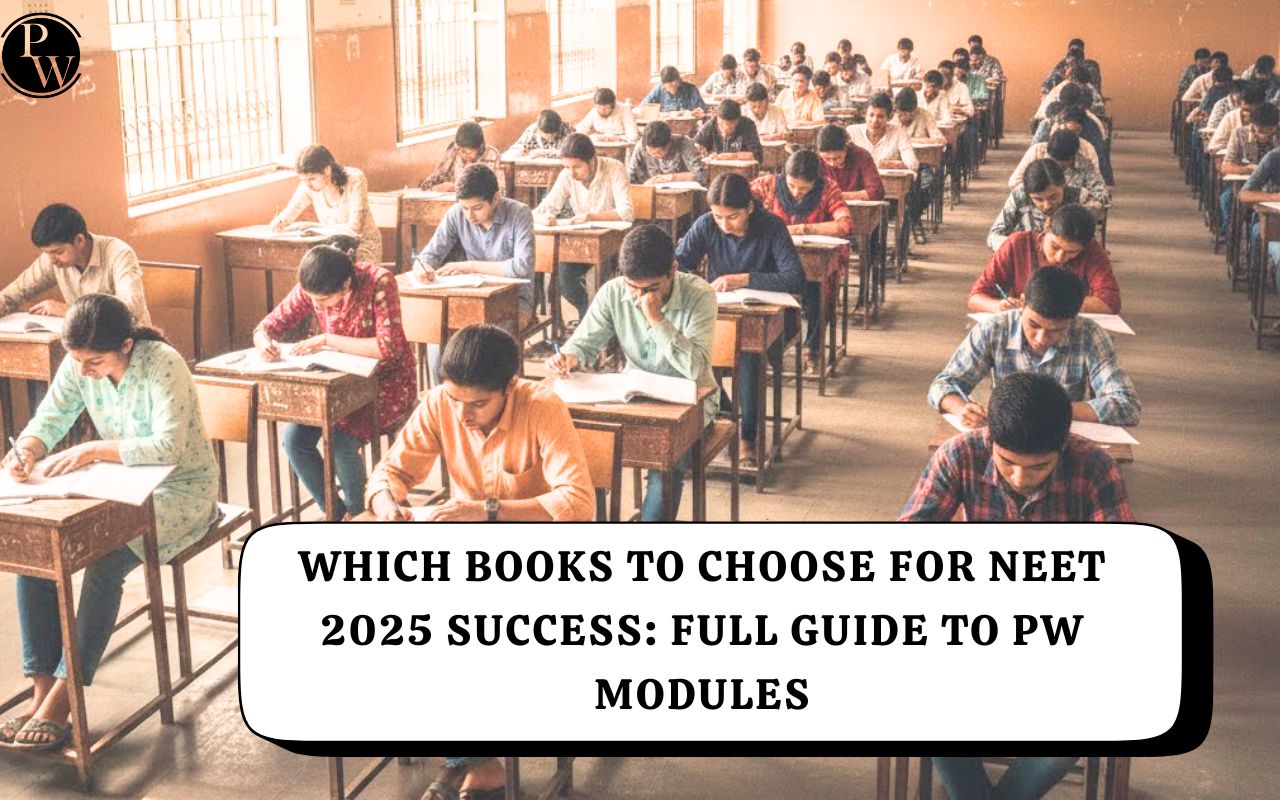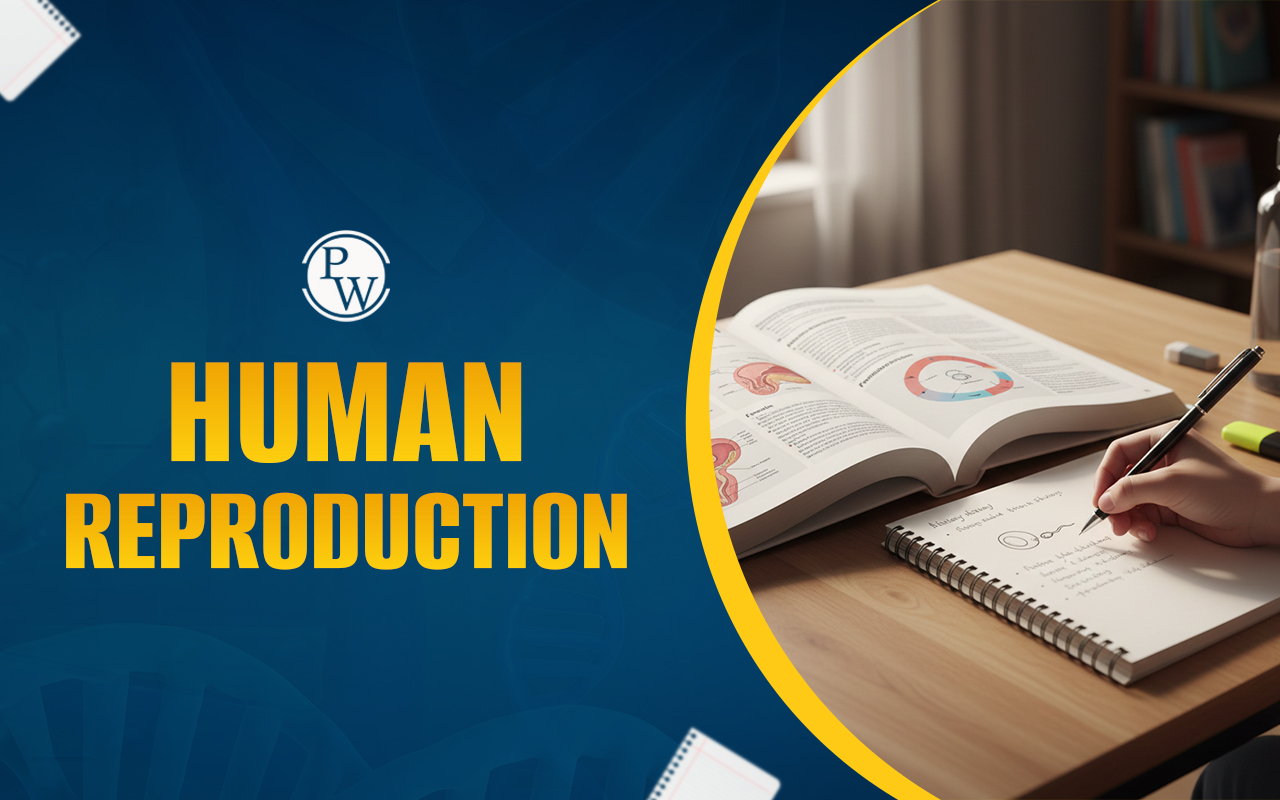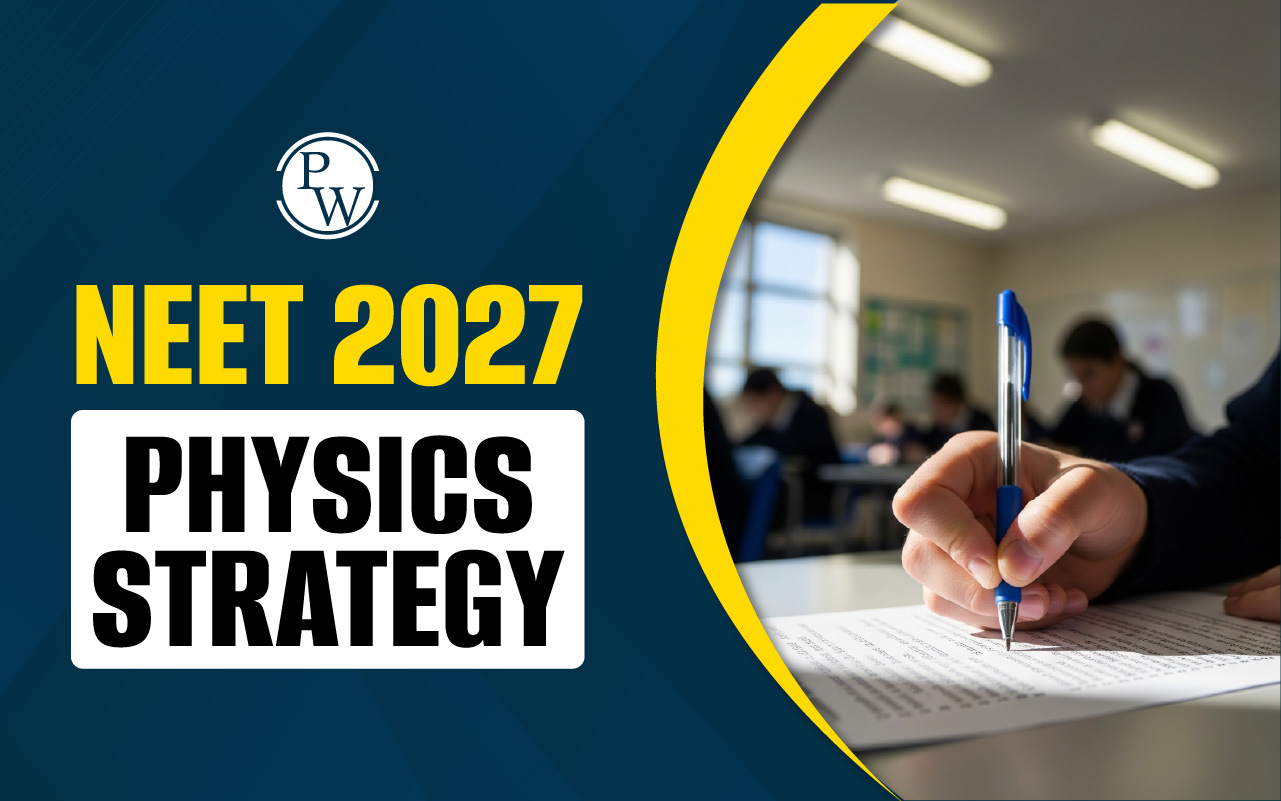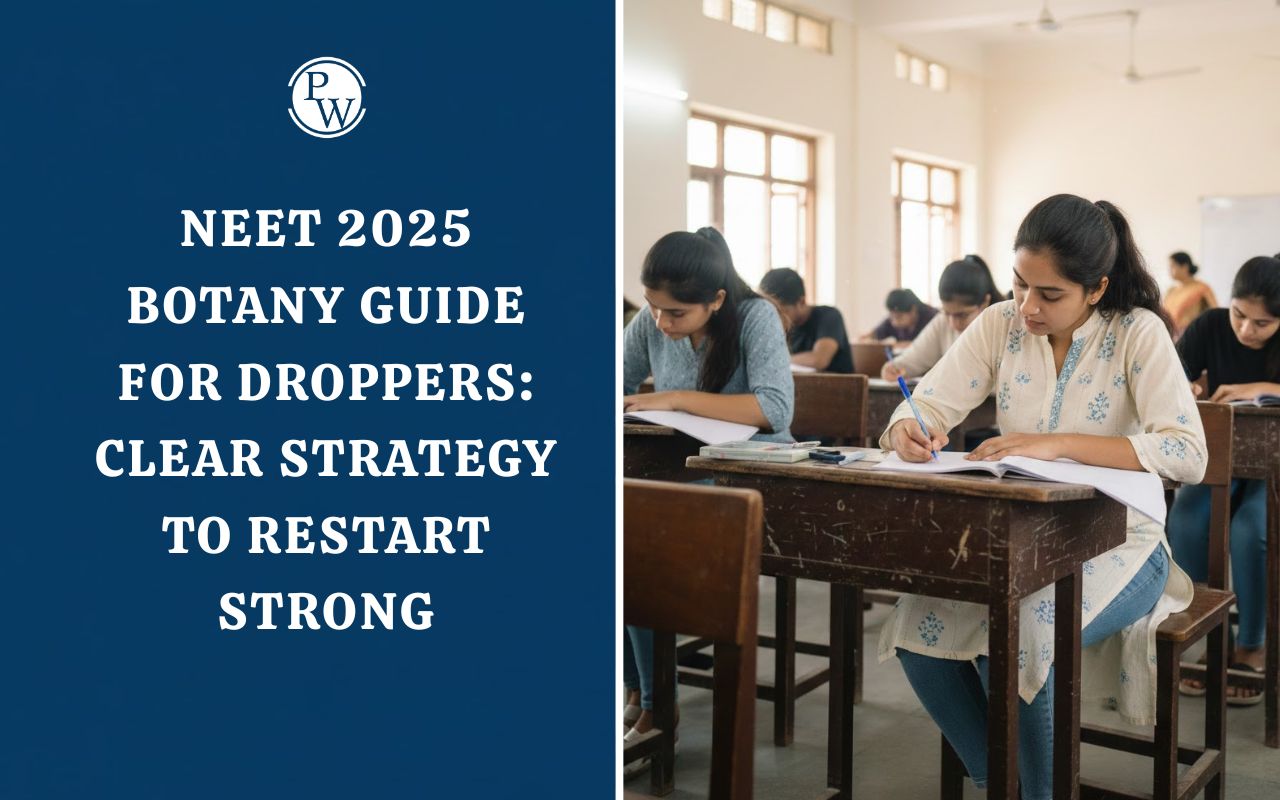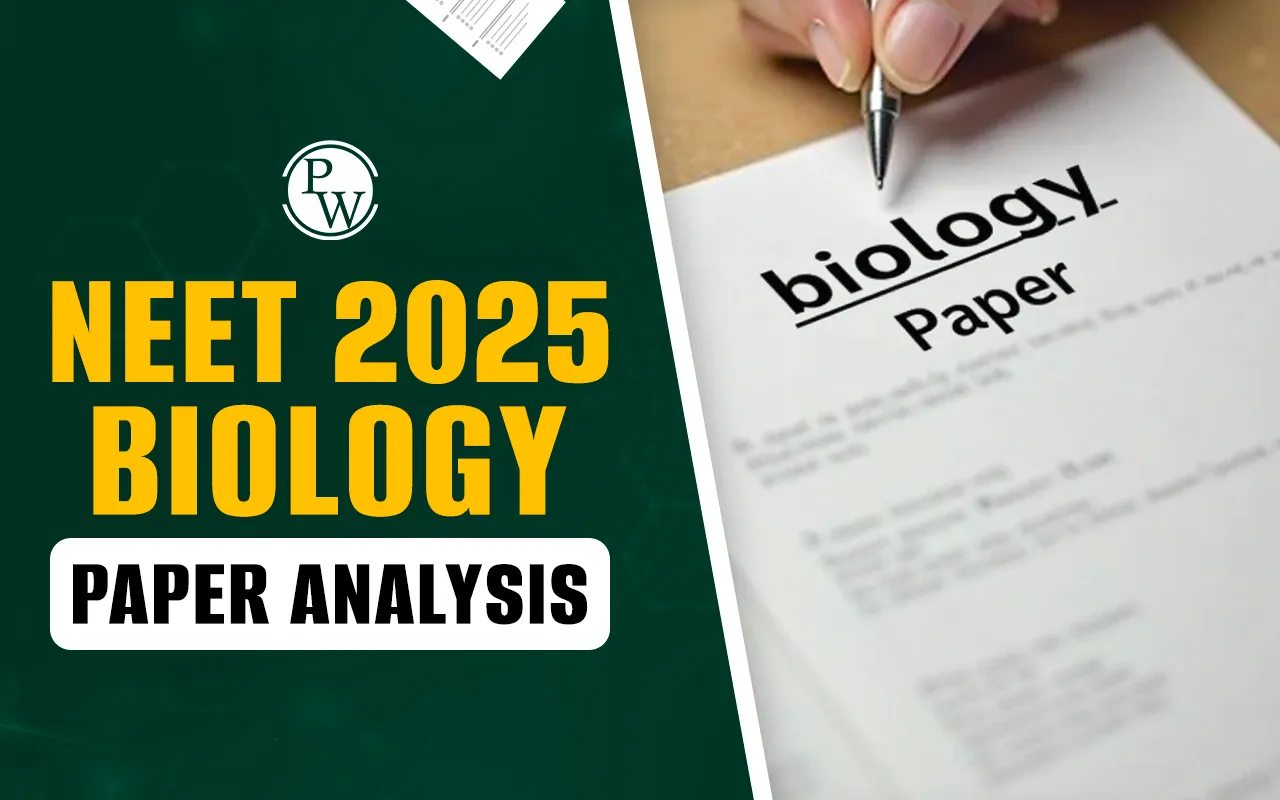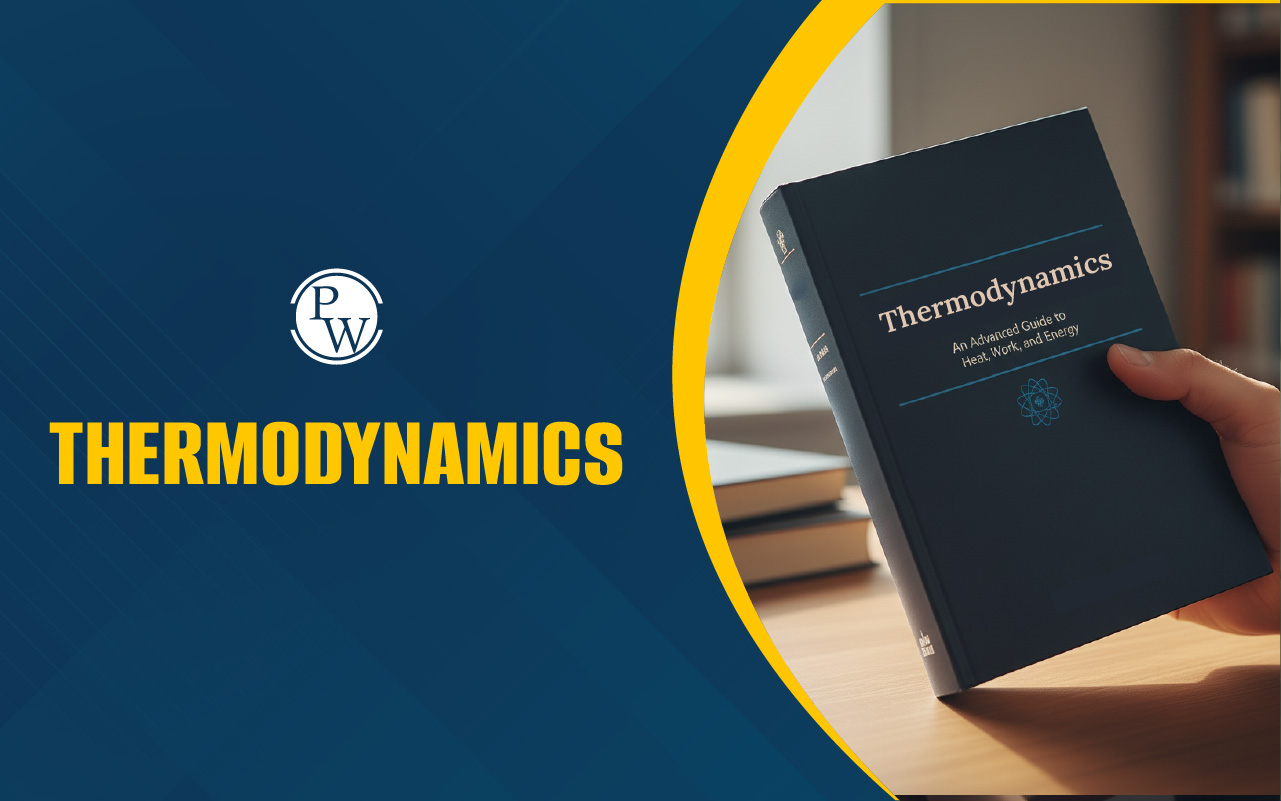
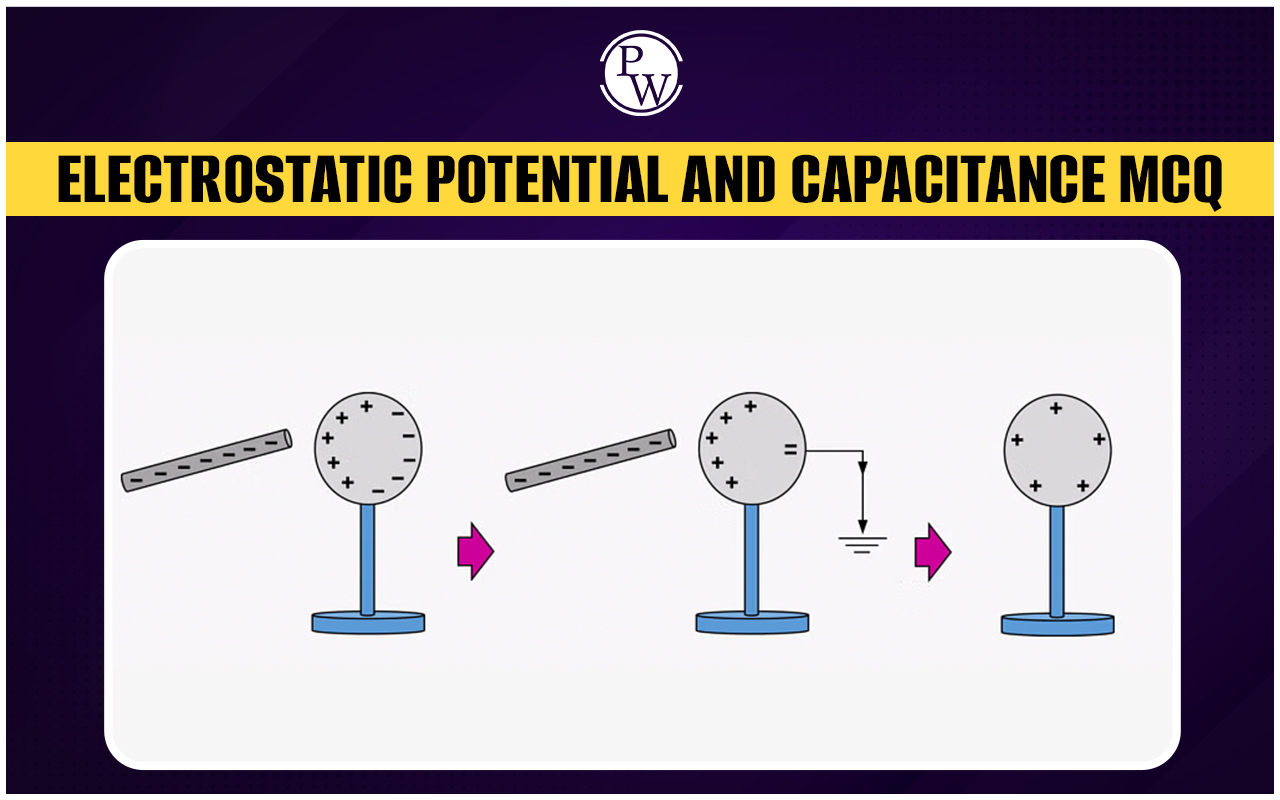
Electrostatic Potential and Capacitance MCQs: Electrostatic potential and capacitance are important topics in Class 12 Physics and are fundamental to understanding key concepts in electrostatics. For students preparing for NEET and other competitive exams, it is essential to master these topics by practicing multiple-choice questions (MCQs). This article will help students understand the importance of MCQs on electrostatic potential and capacitance and provide useful tips to improve their NEET preparation.
Electrostatic Potential and Capacitance MCQs
Class 12 Physics Chapter 2 Electrostatic potential and capacitance are important topics in the NEET Physics syllabus . Questions on these subjects often assess students' understanding of concepts like electric potential, potential difference, and how capacitors behave in different circuits. NEET questions test theoretical knowledge and practical application, requiring students to solve related problems. To perform well in NEET, students should practice a variety of questions on electrostatic potential and capacitance. This will help them become familiar with the types of problems they might encounter on the exam and improve their problem-solving skills.Also check:
Electrostatic Potential and Capacitance MCQs Class 12
Electrostatic potential and capacitance are key topics in Class 12 Physics and form an important part of the NEET Physics syllabus. Understanding these concepts helps students tackle questions related to electric potential, potential difference, and capacitors in various circuits. By practicing multiple-choice questions (MCQs) on these topics, students can strengthen their theoretical knowledge and problem-solving skills. These MCQs, curated by subject experts, align with the latest NEET syllabus and NCERT content, providing a solid foundation for exam preparation.Electrostatic Potential and Capacitance MCQs With Answers
NEET MCQs on Electrostatic Potential and Capacitance from Chapter 2 of Class 12th Physics, along with their answers, are provided below. These questions, carefully selected and designed by subject experts, follow the latest NEET Physics syllabus and the updated NCERT content. By practicing these chapter-specific MCQs, students can improve their preparation for the upcoming NEET Physics exam. Practicing Electrostatic potential and Capacitance MCQs with answers is one of the best ways to prepare for exams. It allows students to test their knowledge, identify areas where they need improvement, and get used to the format of the questions they will encounter in the exam.| NEET Physics MCQs | |
|---|---|
| Units and Measurements MCQs | Motion in a plane MCQs |
| Mathematics Tools MCQs | Newton’s laws of motion MCQs |
| Motion in a straight line MCQs | Gravitation MCQs |
Q 1. A point A is at potential +500 V and B is a point of potential – 500 V. The work done by an external agent to take a unit positive charge from A to B is:
(1) +1000 J (2) –1000 J (3) +500 J (4) –500 J Ans. 2Q 2. The work done in moving a charge from one point to another in an electric field
(1) depends on the initial point only. (2) depends on the final point only. (3) depends on the path followed by it. (4) is independent of the path followed by it. Ans. 4Q 3. Four charges +Q, –Q, +Q, –Q are placed at the corners of a square taken in order. At the centre of the square
(1) E = 0, V = 0 (2) E = 0, V ≠ 0 (3) E ≠ 0, V = 0 (4) E ≠ 0, V ≠ 0 Ans. 1Q 4. Three charges 2q, –q, and –q are located at the vertices of an equilateral triangle. At the centre of the triangle
(1) the field is zero but the potential is non-zero. (2) the field is non-zero but the potential is zero. (3) both field and potential are zero. (4) both field and potential are non-zero.Q 5. Angle between an equipotential surface and an electric line of force is:
(1) 0° (2) 180° (3) 90° (4) 270° Ans. 2Q 6. Equipotential surfaces, associated with an electric field that is increasing in magnitude along the x-direction are:
(1) planes parallel to yz-plane (2) planes parallel to xy-plane (3) planes parallel to xz-plane (4) coaxial cylinders of increasing radii around the x-axis Ans. 1Q 7. Equipotentials at a great distance from a collection of charges whose total sum is not zero are approximately
(1) Sphere (2) Planes (3) Paraboloids (4) Ellipsoids Ans. 2Q 8. If 20J of work has to be done to move an electric charge of 4C from a point where the potential is 10 volts to another point where the potential is V volt find the value of V
(1) 2 volt (2) 70 volt (3) 5 volt (4) 15 volt Ans. 4Q 9. If 40 J of work is to be done in moving a charge of – 500C from A to B. What is the magnitude of the potential difference?
(1) 0.08V (2) 0.10V (3) 0.05V (4) 0.02V Ans. 1Q 10. Twenty-seven drops of the same size are charged at 220 V each. They combine to form a bigger drop. Calculate the potential of the bigger drop.
(1) 1320 V (2) 1520 V (3) 1980 V (4) 660 V Ans. 3Q 11. Assertion (A): Work done in moving a charge between any two points in an electric field is independent of the path followed by the charge, between these points.
Reason (R): Electrostatic forces are non-conservative.
(1) If both Assertion (A) and Reason (R) are True and the Reason (R) is a correct explanation of Assertion (A). (2) If both Assertion (A) and Reason (R) are True but Reason (R) is not a correct explanation of the Assertion (A). (3) If Assertion (A) is True but the Reason (R) is False. (4) Assertion (A) is False but the Reason (R) is True. Ans. 3Q 12. Assertion (A): At a point, an electrostatic field is zero, the potential at that point may be zero.
Reason (R): The negative of the potential gradient is equal to the electric field intensity.
(1) If both Assertion (A) and Reason (R) are True and the Reason (R) is a correct explanation of Assertion (A). (2) If both Assertion (A) and Reason (R) are True but Reason (R) is not a correct explanation of the Assertion (A). (3) If Assertion (A) is True but the Reason (R) is False. (4) Assertion (A) is False but the Reason (R) is True. Ans. 4Q 13. In a region of constant potential
(1) the electric field is uniform (2) the electric field is zero (3) there must be a charge inside the region. (4) the electric field shall necessarily change if a charge is placed outside the region. Ans. 2Q 14. The electric field lines are closer together near object A than they are near object B. We can conclude
(1) the potential near A is greater than the potential near B (2) the potential near A is less than the potential near B (3) the potential near A is equal to the potential near B (4) nothing about the relative potentials near A and B Ans. 4Q 15. Two positive point charges of 12μC and 8μC are 10 cm apart. The work done in bringing them 4 cm closer is:
(1) 5.8J (2) 5.8eV (3) 13J (4) 13eV Ans. 3Q 16. A positively charged particle is released from rest in a uniform electric field. The electric potential energy of the charge
(1) Remains constant because the electric field is uniform (2) Increases because the charge moves along the electric field (3) Decreases because the charge moves along the electric field (4) Decreases because the charge moves opposite to the electric field Ans. 3Q 17. Two positive point charges of 18μC and 15 μC are 1m apart. What is the work done in bringing them 0.4m apart?
(1) 10540J (2) 3.645J (3) 4.125J (4) 2.360J Ans. 2Q 18. Three point charges q, 2q, and 8q are to be placed on a straight line 9cm long. The system possesses minimum potential energy when.
(1) 2q and q lie at ends with 8q at 3 cm from 2q (2) 2q and 8q lie at ends with q at 6 cm from 8q (3) q and 8q lie at ends with 2q at 6 cm from 8q (4) 2q and 8q lie at ends with q at 3 cm from 8q Ans. 2Q 19. Work required to bring a 3 μC charge at a distance of 1.50 m from 20 μC charge to a distance of 0.50 m is:
(1) 0.72 J (2) 7.2 J (3) 0.36 J (4) 3.6 J Ans. 1Q 20. Assertion (A): The change in the potential energy of a two-charge system is independent of the choice of zero potential energy reference.
Reason (R): The potential energy of a charge may decrease when it moves opposite to the electric field
(1) If both Assertion (A) and Reason (R) are true, and Reason (R) is the correct explanation of Assertion (A). (2) If both Assertion (A) and Reason (R) are true but Reason (R) is not the correct explanation of Assertion (A). (3) If Assertion (A) is true but Reason (R) is false. (4) If Assertion (A) is false but Reason (R) is true. Ans. 2Q 21. Two identical rings P and Q of radius 0.1 m are mounted coaxially at a distance 0.5 m apart. The charges on the two rings are 2μC and 4μC, respectively. The work done in transferring a charge of 5μC from the center of P to that of Q is:
(1) 1.28 J (2) 0.72 J (3) 0.144 J (4) 2.24 J Ans. 2Q 22. Three charges –q + Q and –q are placed at equal distances on a straight line. If the potential energy of the system of three charges is zero, find the ratio Q/q.
(1) 1: 2 (2) 2: 1 (3) 1: 4 (4) 4: 1 Ans. 3Q 23. The center of an electric dipole is placed at the origin, with the axis of the dipole along the x-axis. The dipole moment of the system is p, the distance between the two charges is 2a and each charge has magnitude q. The electric potential due to the dipole at a point P, r distance away from the origin, having position vector r depends only on: (given r >> a)
(1) q, a (2) r, a (3) r, p (4) r, q Ans. 3Q 24. The electric potential at point P which is on the line segment joining the two charges of an electric dipole:
- Maybe zero.
- Maybe non-zero.
- Must be zero.
- Must be non-zero.
Q 25 Assertion (A): Spherical conductors having equal positive charge and volume, must also have the same potential.
Reason (R): Potential depends only on the charge and volume of the conductor.
(1) If both Assertion (A) & Reason (R) are True & the Reason (R) is a correct explanation of the Assertion (A). (2) If both Assertion (A) & Reason (R) are True but Reason (R) is not a correct explanation of the Assertion (A). (3) If Assertion (A) is True but the Reason (R) is False. (4) If both Assertion (A) & Reason (R) are False. Ans. 4Q 26. Two spherical conductors A and B of radii 1 mm and 2 mm are separated by a distance of 5 cm and are uniformly charged. If the spheres are connected by a conducting wire, then in equilibrium condition, the ratio of the magnitude of the potential at the surfaces of spheres A and B are:
(1) 4: 1 (2) 1: 1 (3) 2: 1 (4) 1: 4 Ans. 3Q 27. Statement I: The potential difference between two concentric charged metal spherical shells is directly proportional to the charge of the inner sphere.
Statement II: The field inside the space between the two spheres described above will be only due to the charge of the inner sphere.
(1) Both Statement I and Statement II are correct. (2) Both Statement I and Statement II are incorrect. (3) Statement I is correct and Statement II is incorrect. (4) Statement I is incorrect and Statement II is correct. Ans. 1Q 28. If the charge on a capacitor is doubled, the value of its capacitance C will:
(1) Doubled (2) Halved (3) Remain the same (4) None of these Ans. 3Q 29. The capacity of parallel plate capacitor depends upon
(1) Separation between the plates (2) Nature of element/metal (3) Potential difference across plates (4) All of these Ans. 1Q 30. The capacitance of a parallel plate capacitor is 60μF. If the distance between the plates is tripled and the area doubled then new capacitance will be
(1) 10μF (2) 40μF (3) 80μF (4) 100μF Ans. 2Q 31. Between the plates of the parallel plate condenser, there is a 1mm thick medium sheet of dielectric constant 4. It is charged at 100 volts. If the cell remains connected, then the electric field in volt/meter between the plates of the capacitor is
(1) 100000 (2) 100 (3) 25000 (4) 400000 Ans. 3Q 32. The potential of the two plates of the capacitor are +10V and –10V. The charge on one of the plates is 40C. The capacitance of the capacitor is
(1) 2F (2) 4F (3) 0.5F (4) 0.25F Ans. 1Q 33. If a capacitor is charged to 100 volts and the potential of its negative plate is –50 volts then the potential of its positive plate will be
(1) +100V (2) –100V (3) +50V (4) +150V Ans. 3Q 34. 1000 small water drops each of capacitance C join together to form one large spherical drop. The capacitance of a bigger sphere is:
(1) C (2) 10C (3) 100C (4) 1000C Ans. 2Q 35. Eight small drops each of radius r and having the same radius and charge q are combined to form a big drop. The ratio between the potential of the bigger drop and the smaller drop is:
(1) 8: 1 (2) 4: 1 (3) 2: 1 (4) 1: 8 Ans. 2Q 36. Assertion(A): If the distance between charged plates and isolated parallel plate capacitor increases then the force between plates decreases.
Reason (R): Capacitance of a sphere is given by 0 4 R, π ∈ where R is the radius of the sphere.
(1) If both Assertion (A) and Reason (R) are True and the Reason (R) is a correct explanation of Assertion (A). (2) If both Assertion (A) and Reason (R) are True but Reason (R) is not a correct explanation of the Assertion (A). (3) If Assertion (A) is True but the Reason (R) is False. (4) Assertion (A) is False but the Reason (R) is True. Ans. 4Q 37. The electrostatic force between the metal plates of an isolated parallel plate capacitor C having a charge Q and area A, is
(1) Proportional to the square root of the distance between the plates (2) Linearly proportional to the distance between the plates (3) Independent of the distance between the plates (4) Inversely proportional to the distance between the plates Ans. 4Q 38. Two charged metal spheres of radii R and 2R are temporarily placed in contact and then separated. At the surface of each, the ratio of the electric field will be:
(1) 1: 1 (2) 1: 2 (3) 2: 1 (4) 1: 4 Ans. 3Q 39. The distance between the plates of a parallel plate capacitor is d. A metal plate of thickness d/2 is placed between the plates. What will be its effect on the capacitance?
(1) Capacitance will be halved (2) Capacitance will be doubled (3) Capacitance will not change (4) Capacitance will become 1.5 times the original Ans. 2 Physics Wallah offers top NEET Online Coaching for Droppers and Class 12 students, with affordable fees, expert faculty, live/recorded classes, and doubt-clearing sessions. Courses are available in multiple languages, providing personalized guidance and study materials to strengthen your NEET preparation. Enroll now!Electrostatic Potential and Capacitance MCQs FAQs
Q. Why are Electrostatic Potential and Capacitance MCQs important for NEET?
Q. What topics are covered in Electrostatic Potential and Capacitance MCQs?
Q. How do these MCQs help in NEET preparation?
Q. How often should students practice these MCQs?
Q. Where can students find Electrostatic Potential and Capacitance MCQs?
Q. How can solving MCQs help with time management in NEET?


